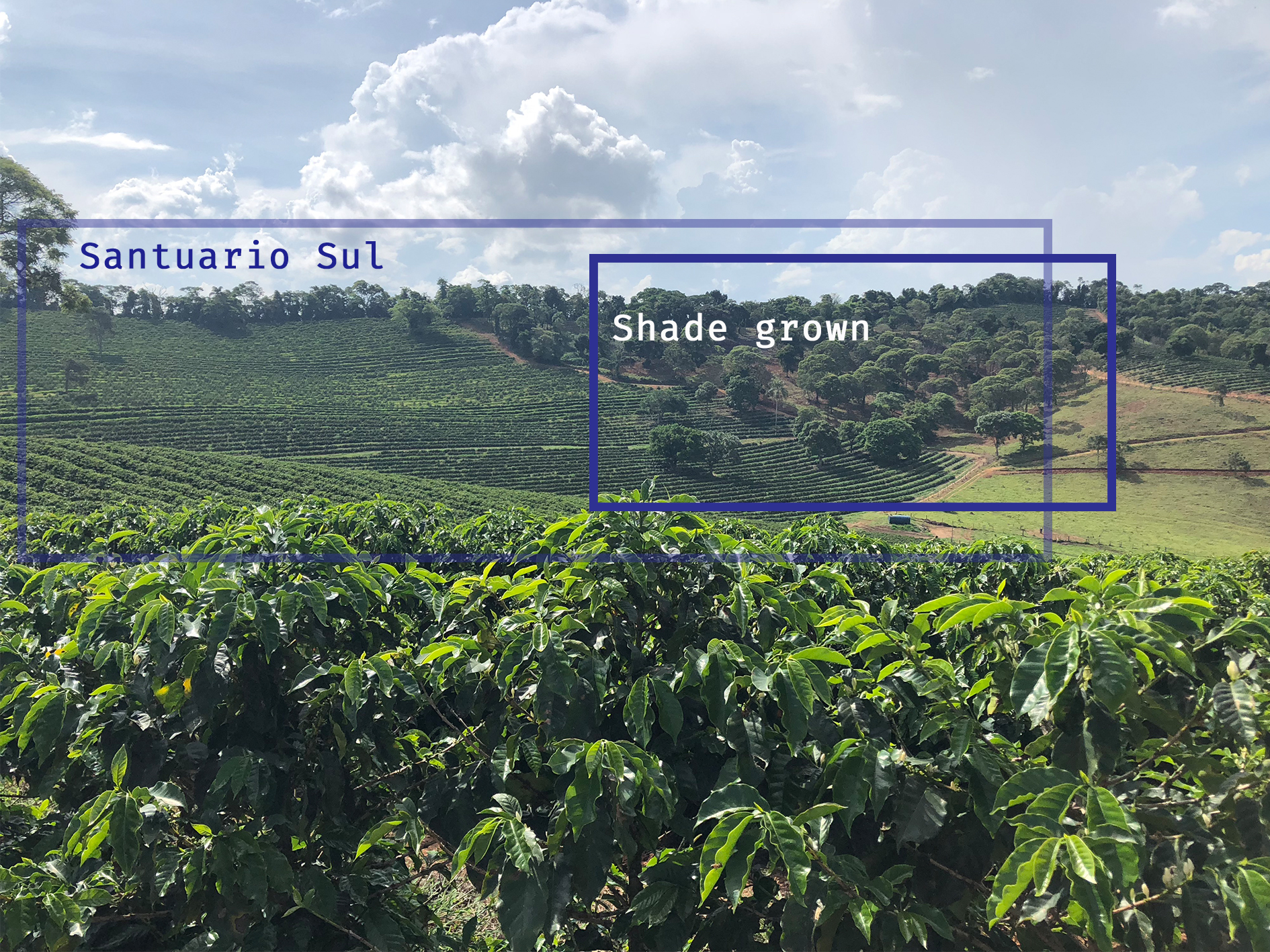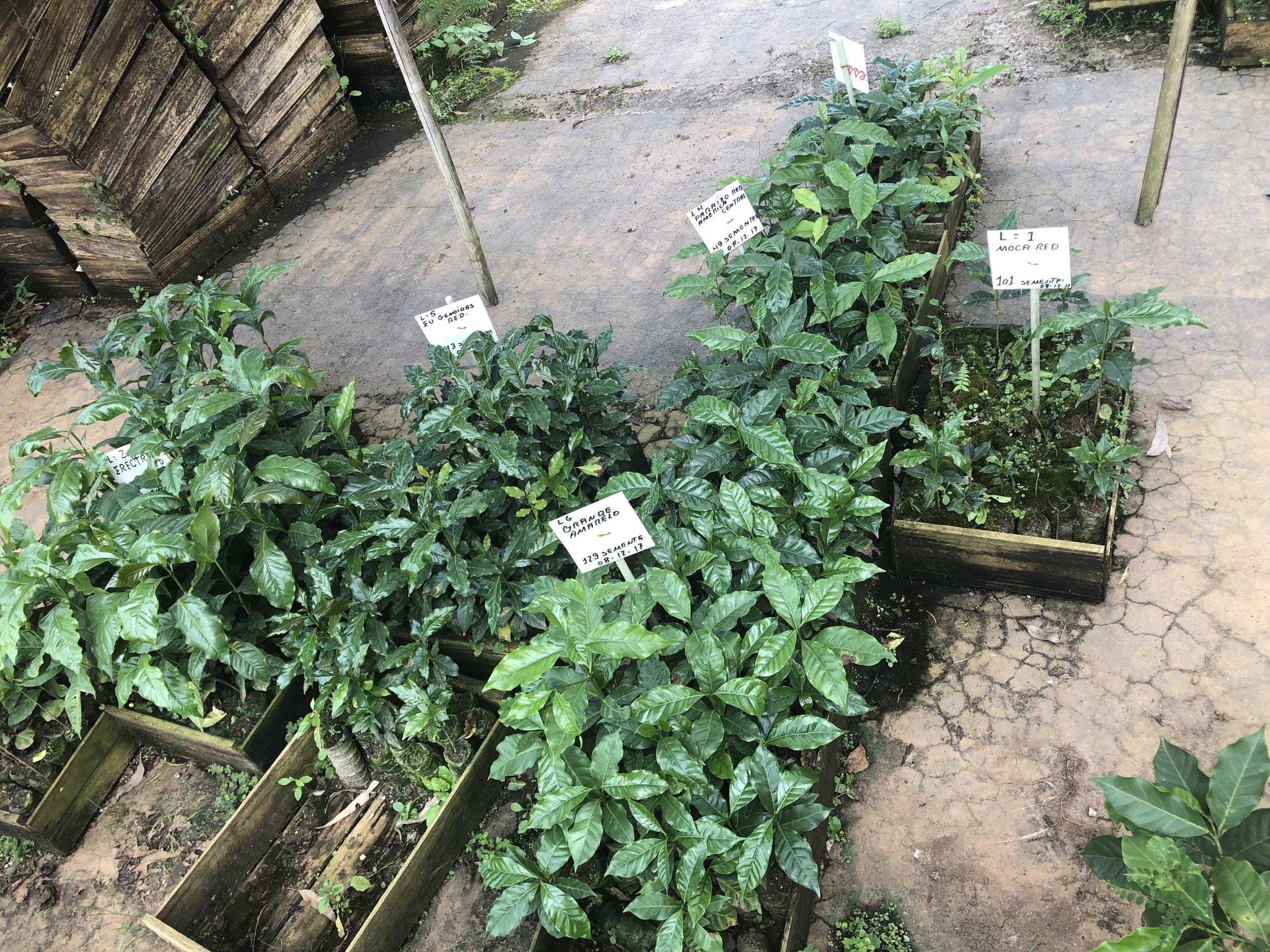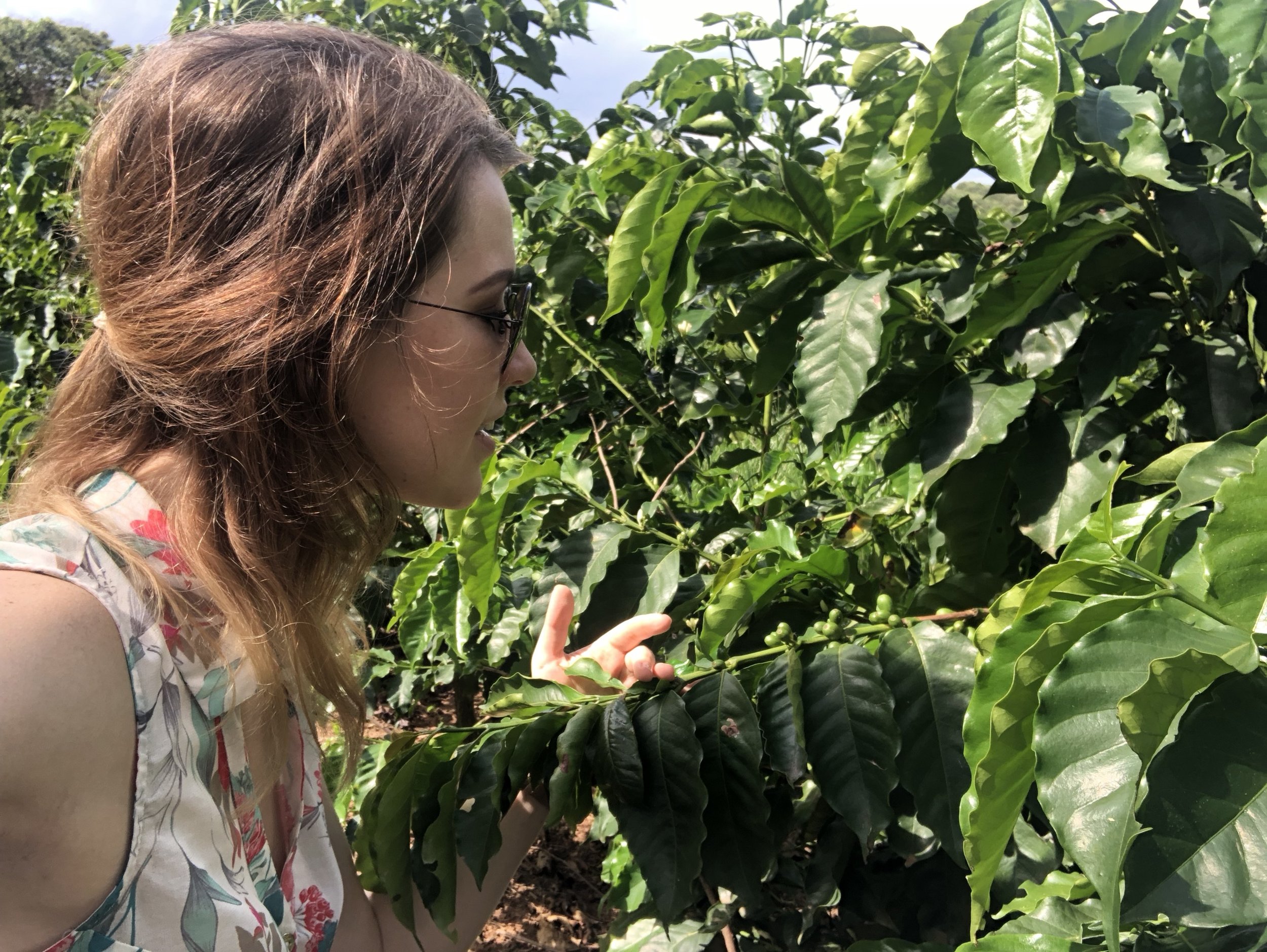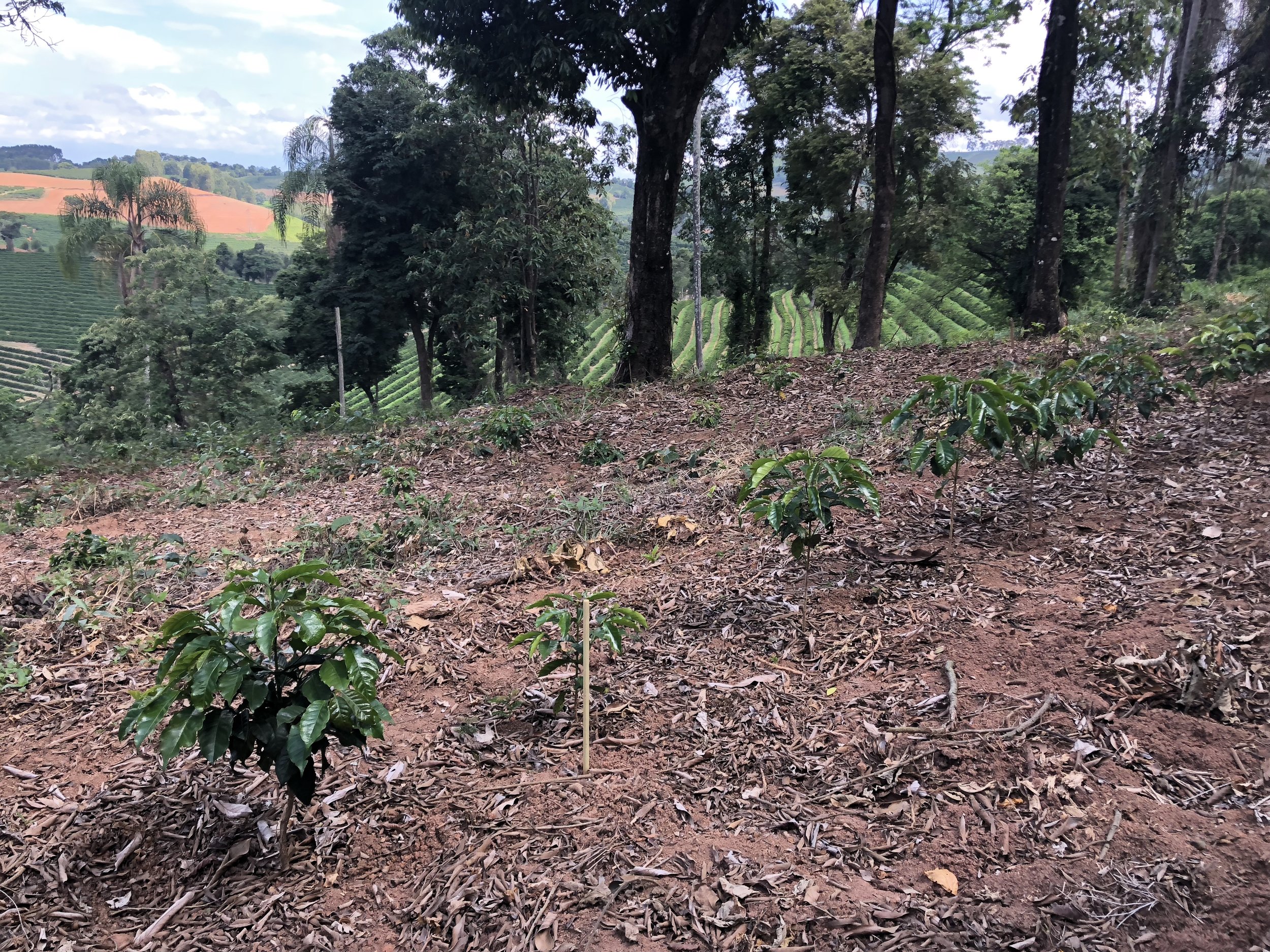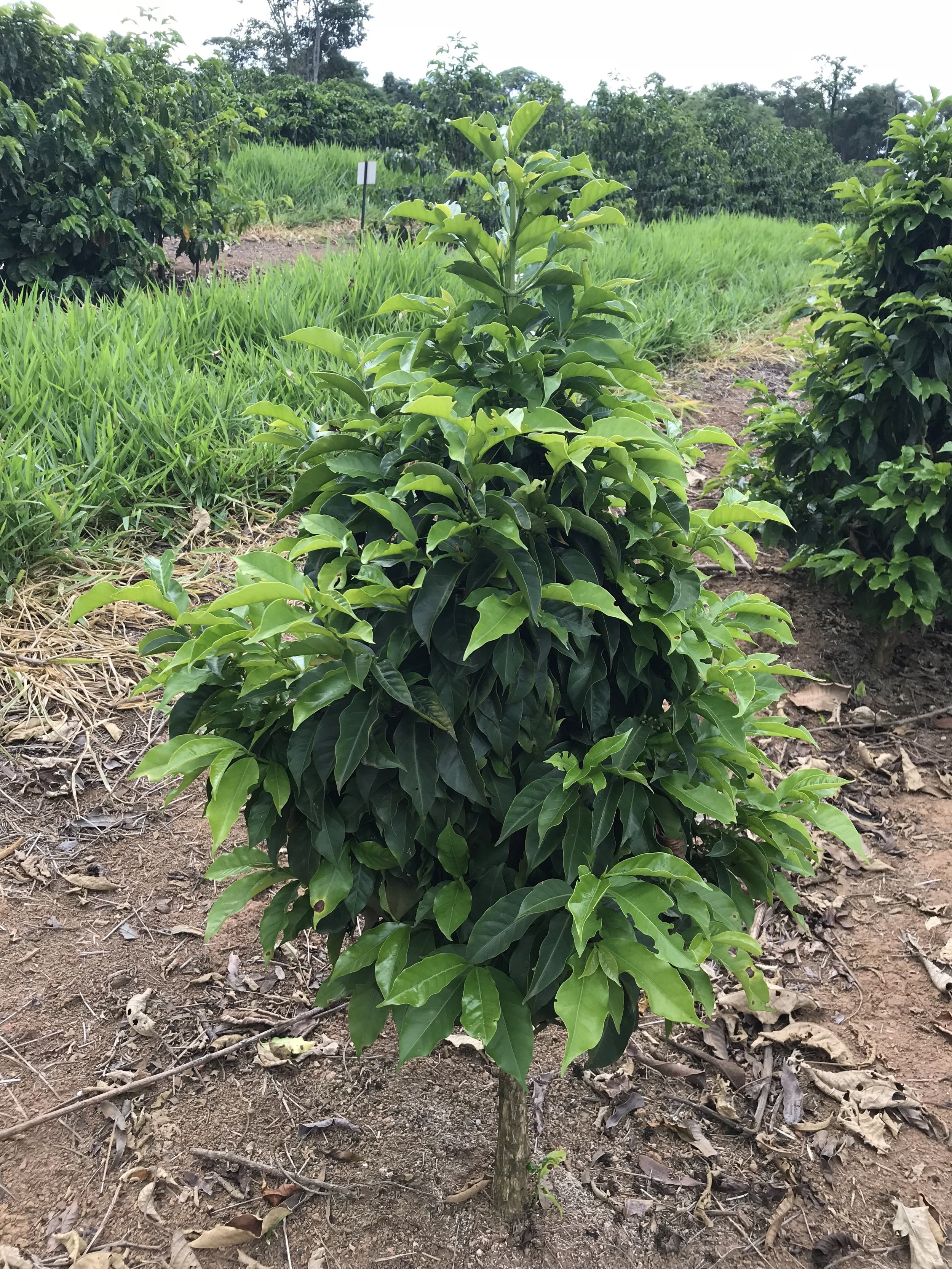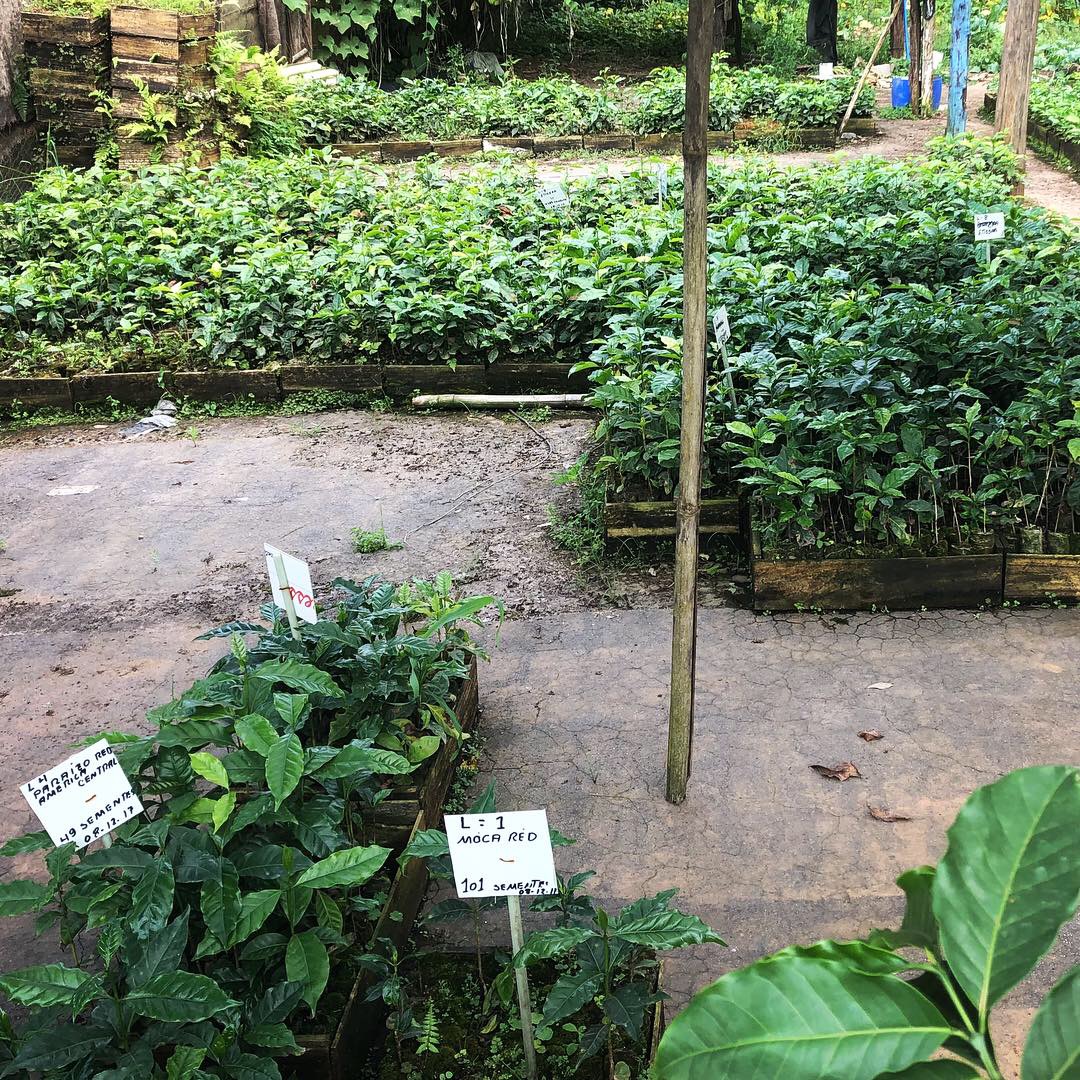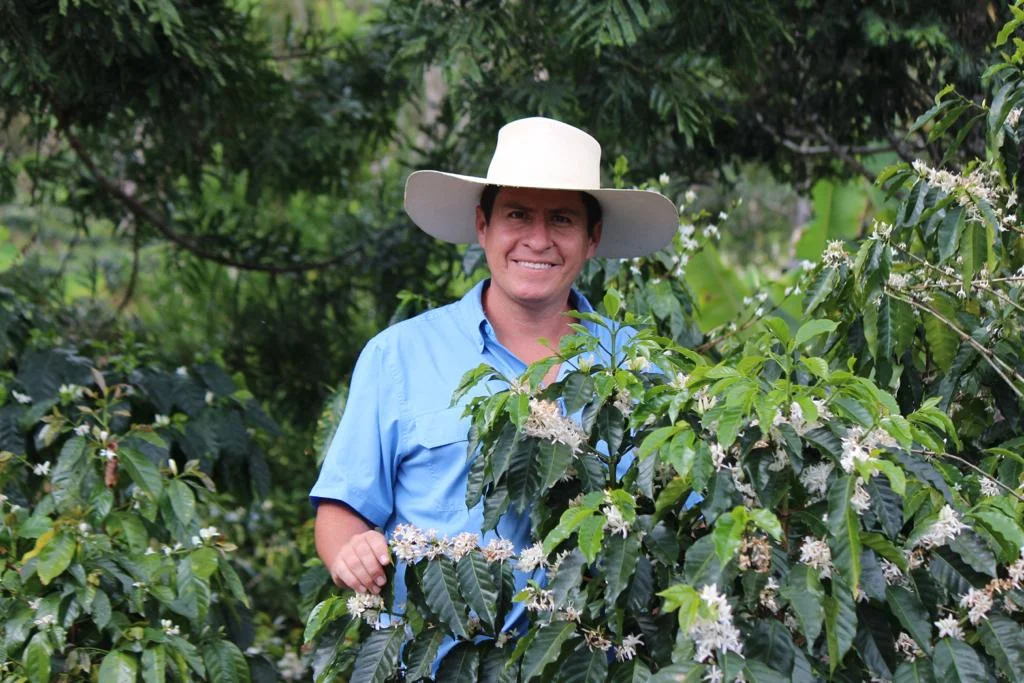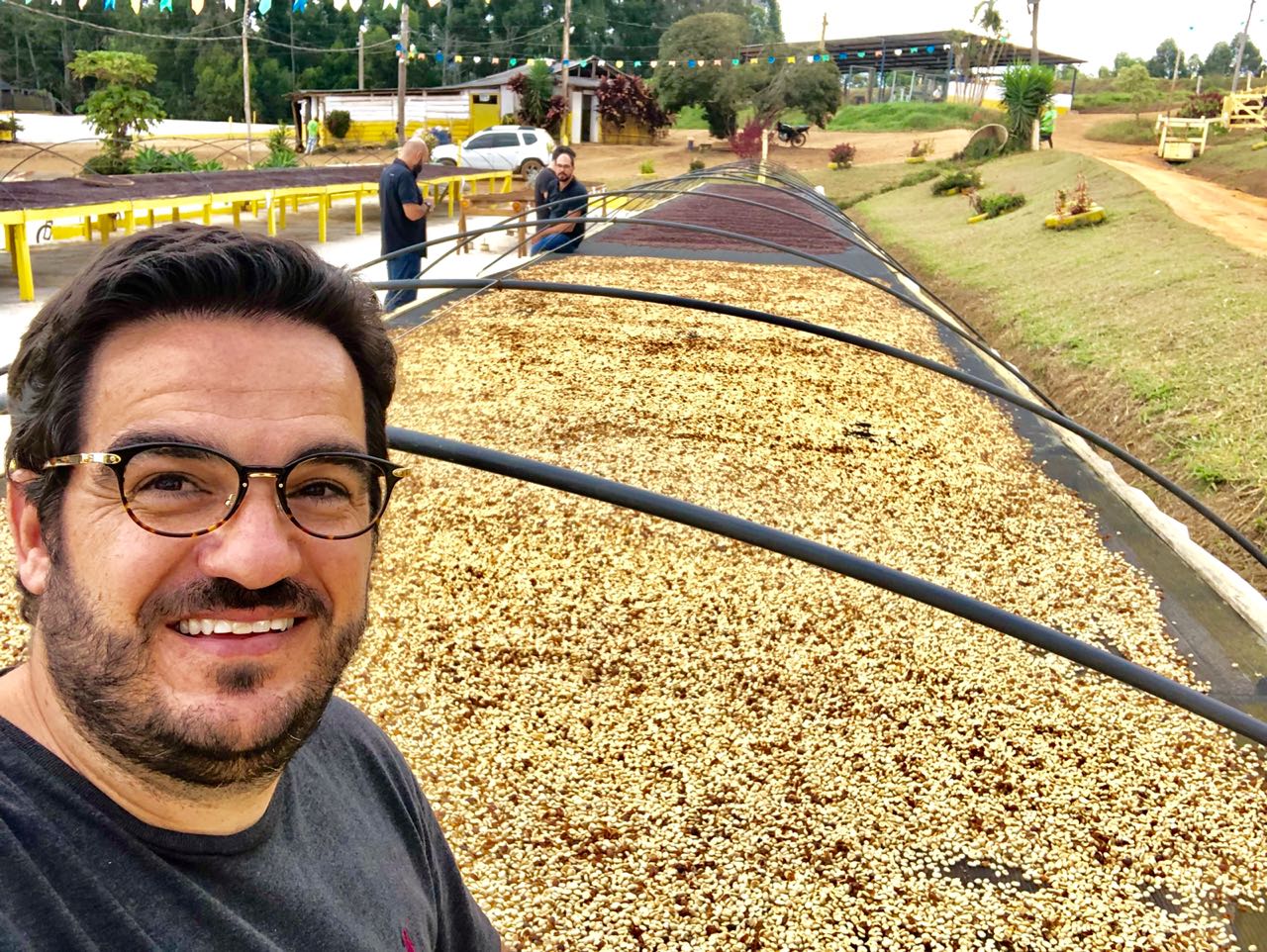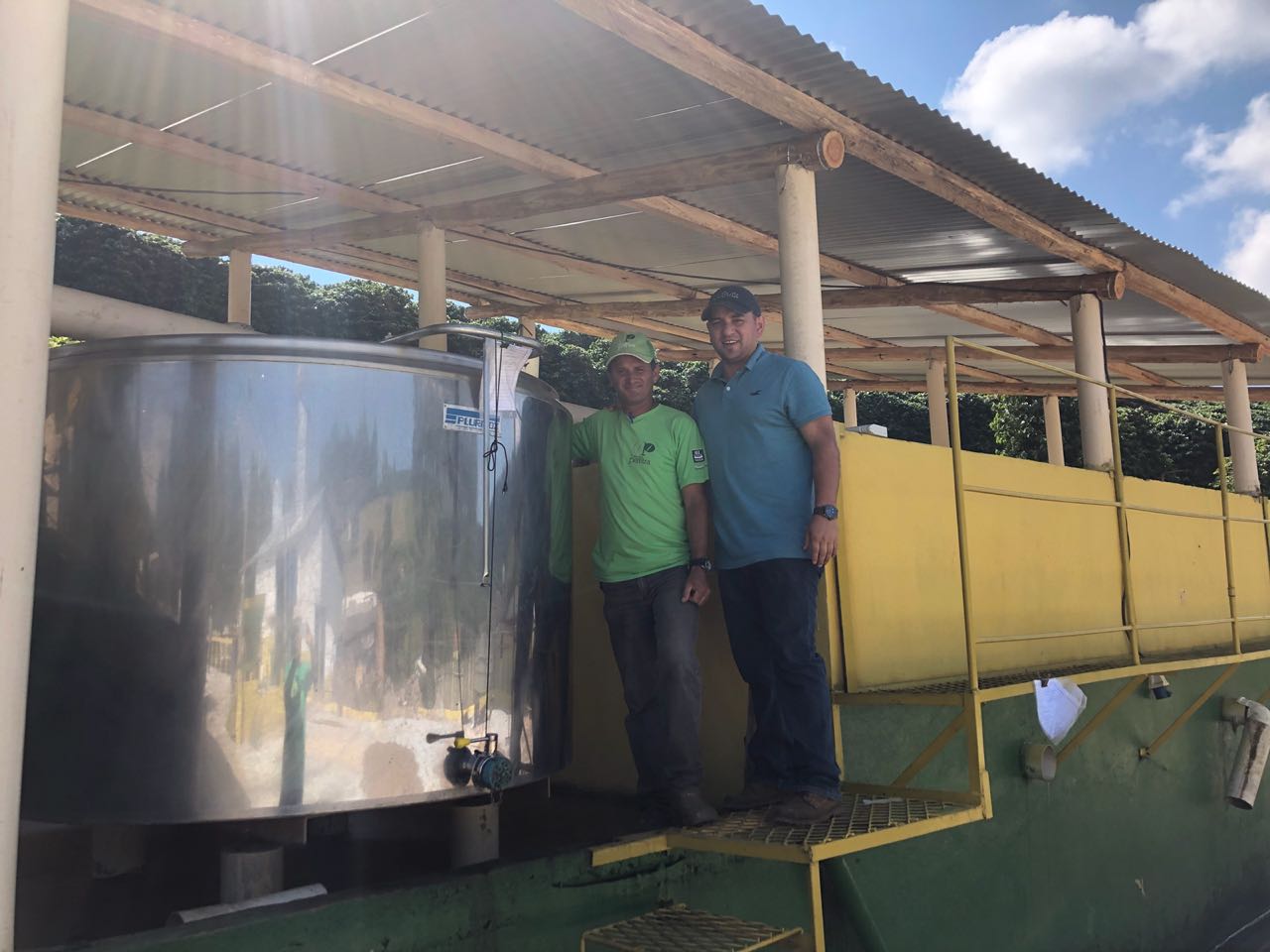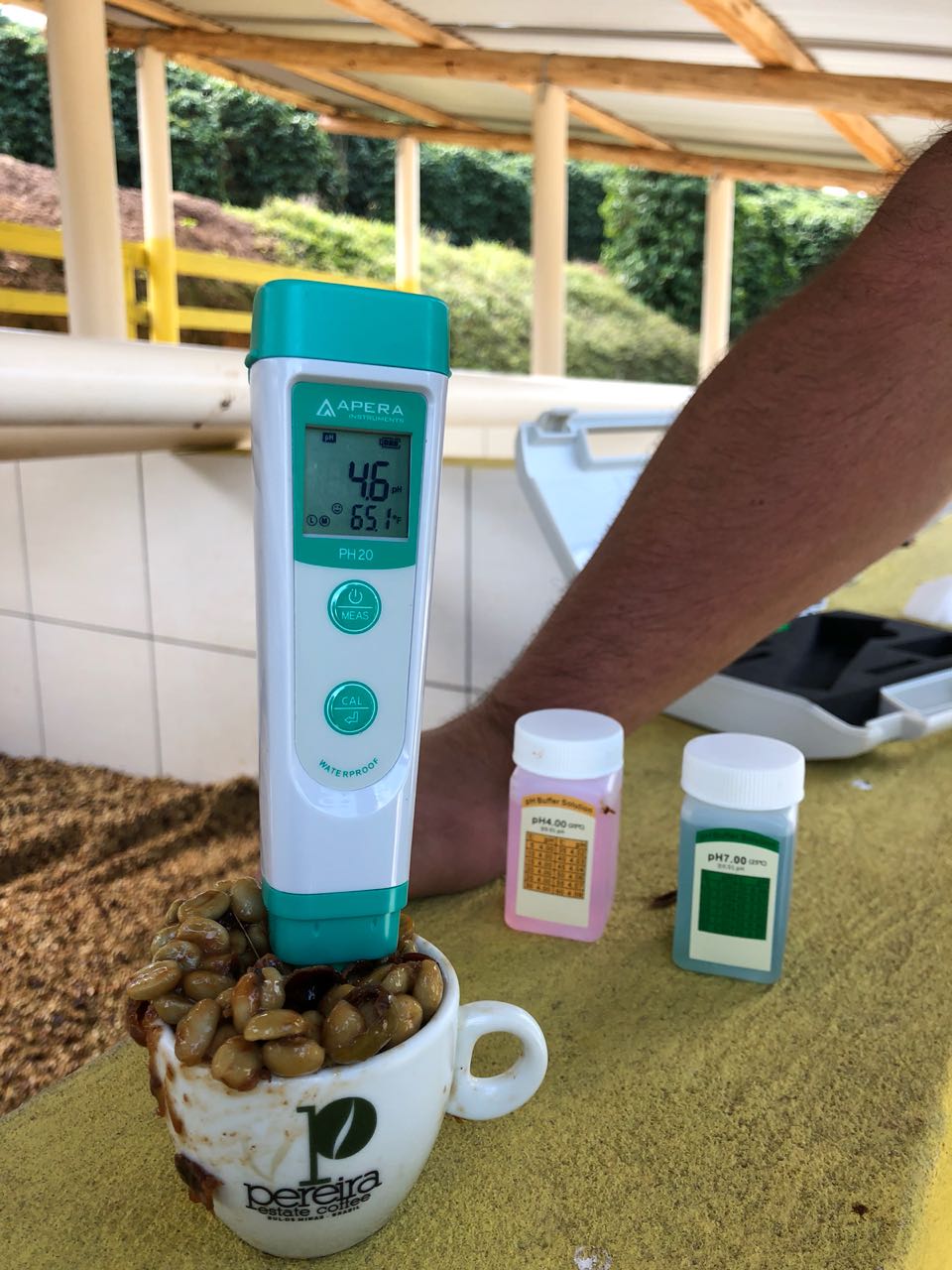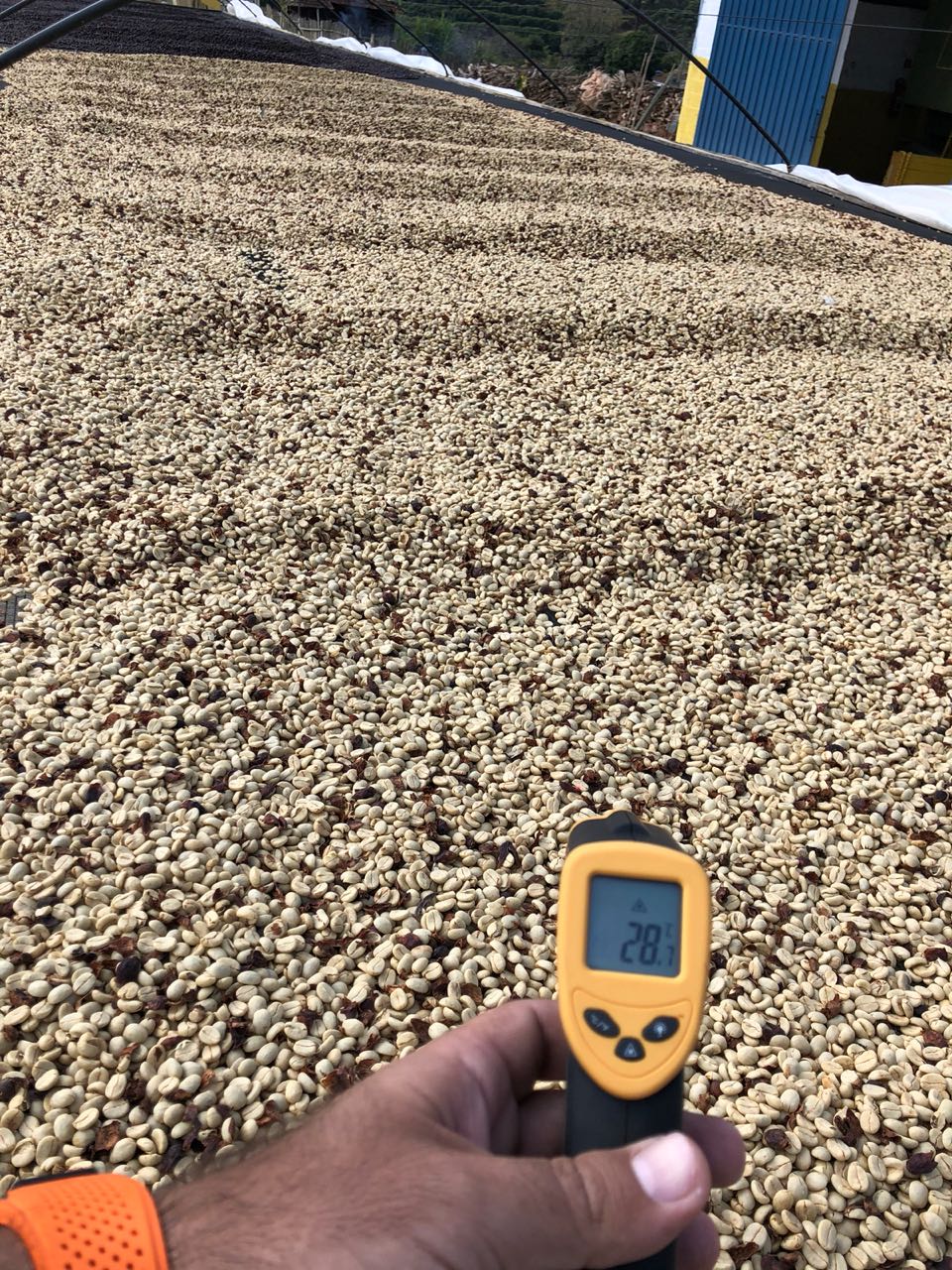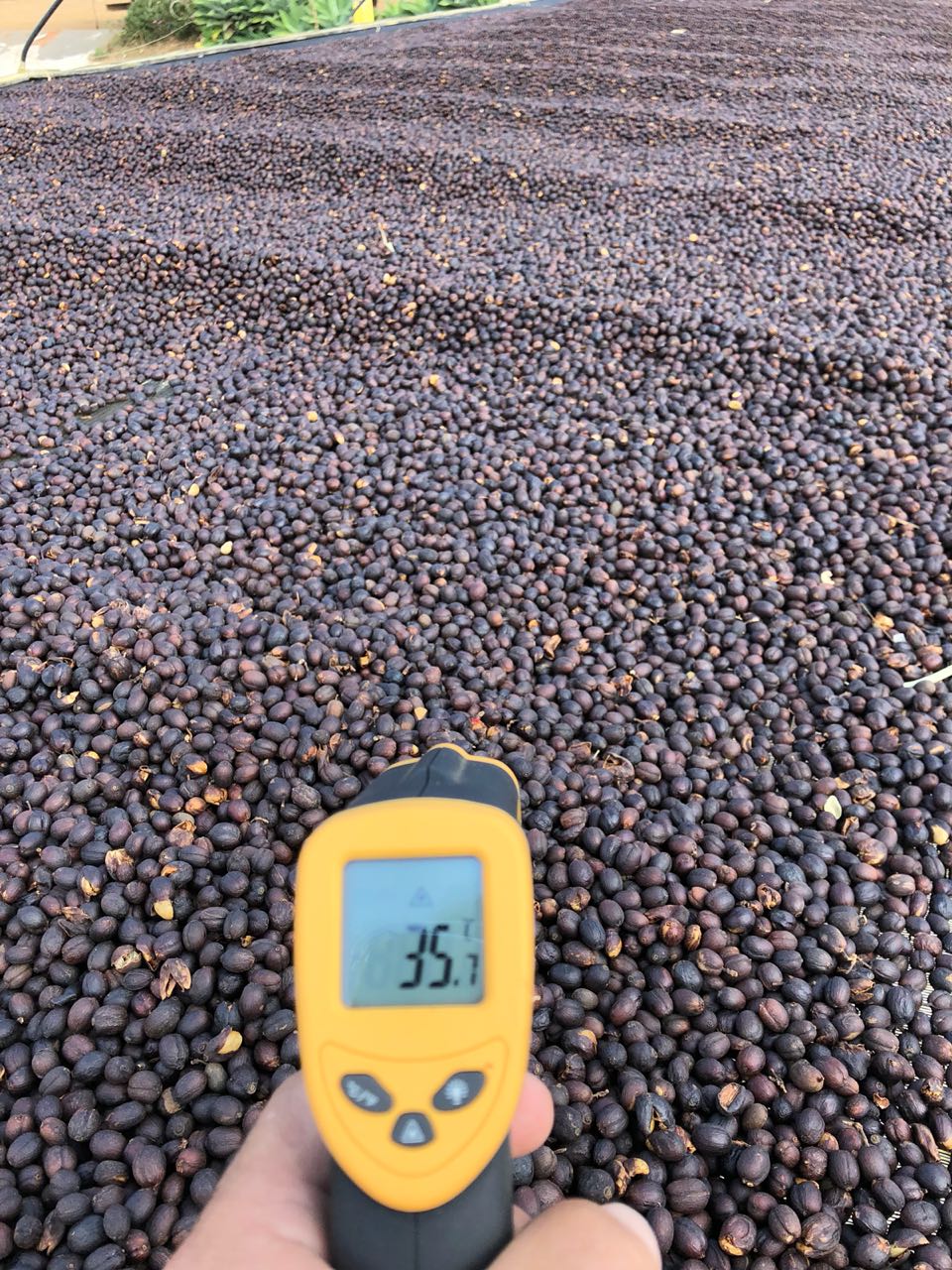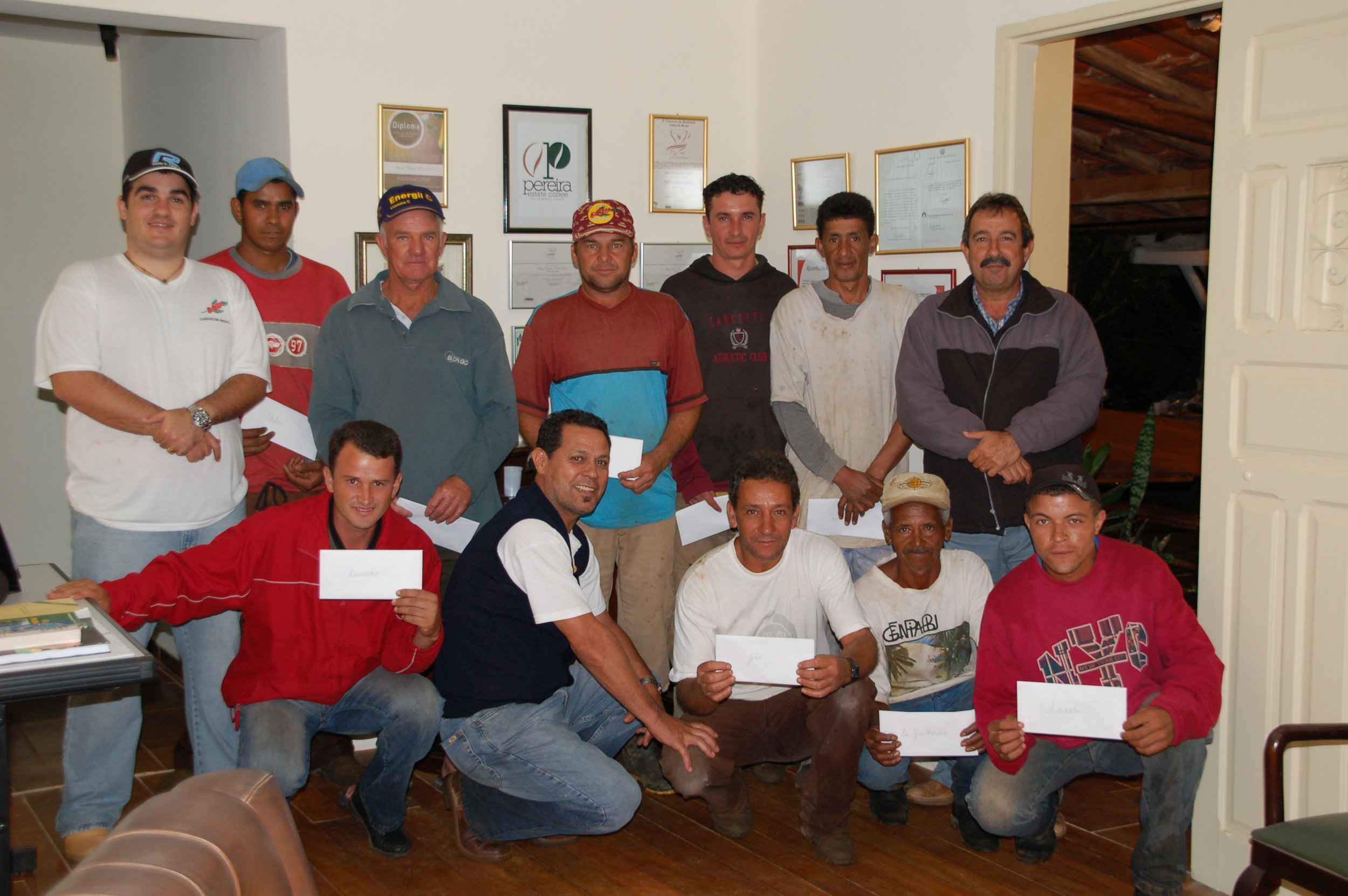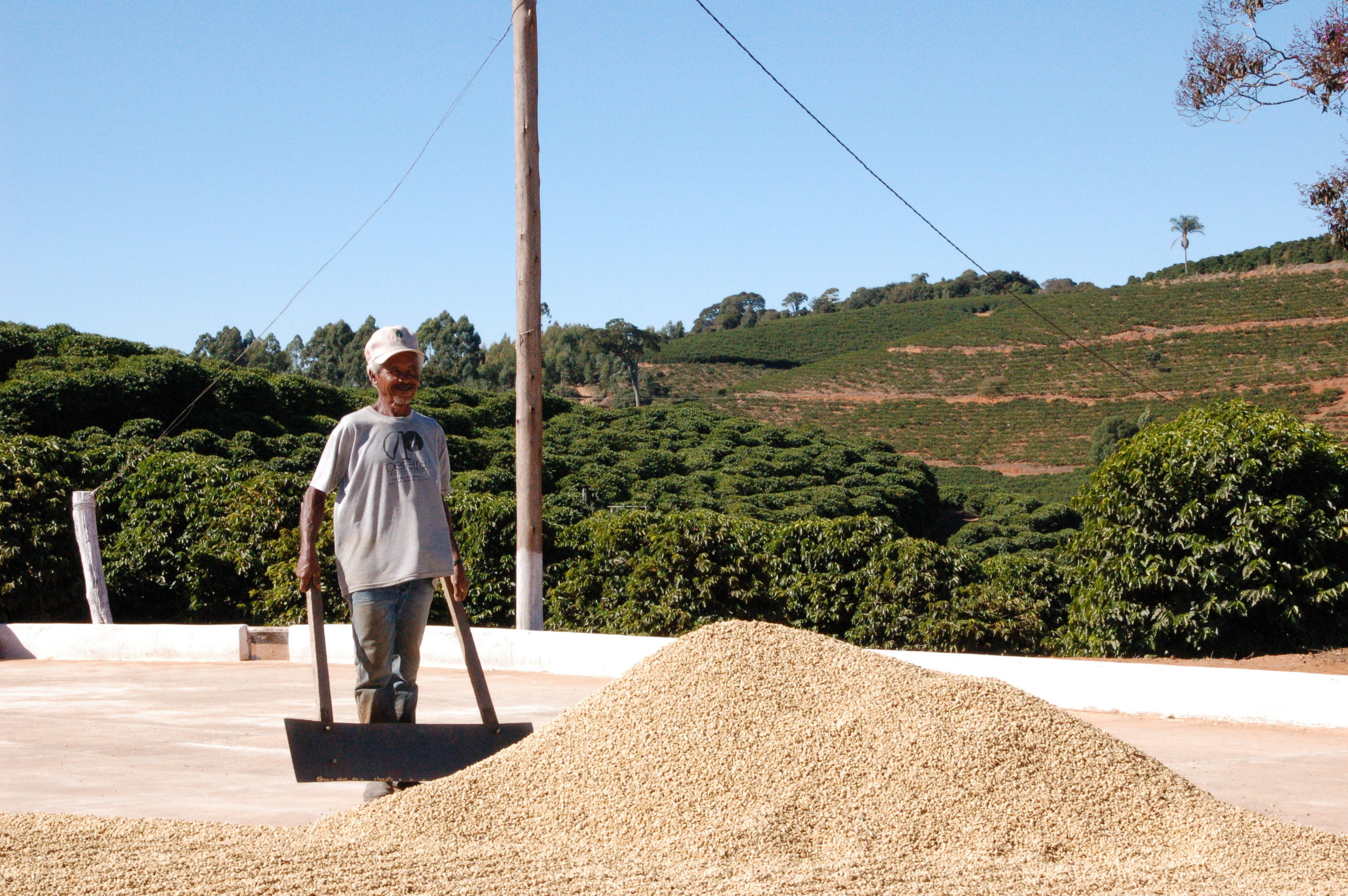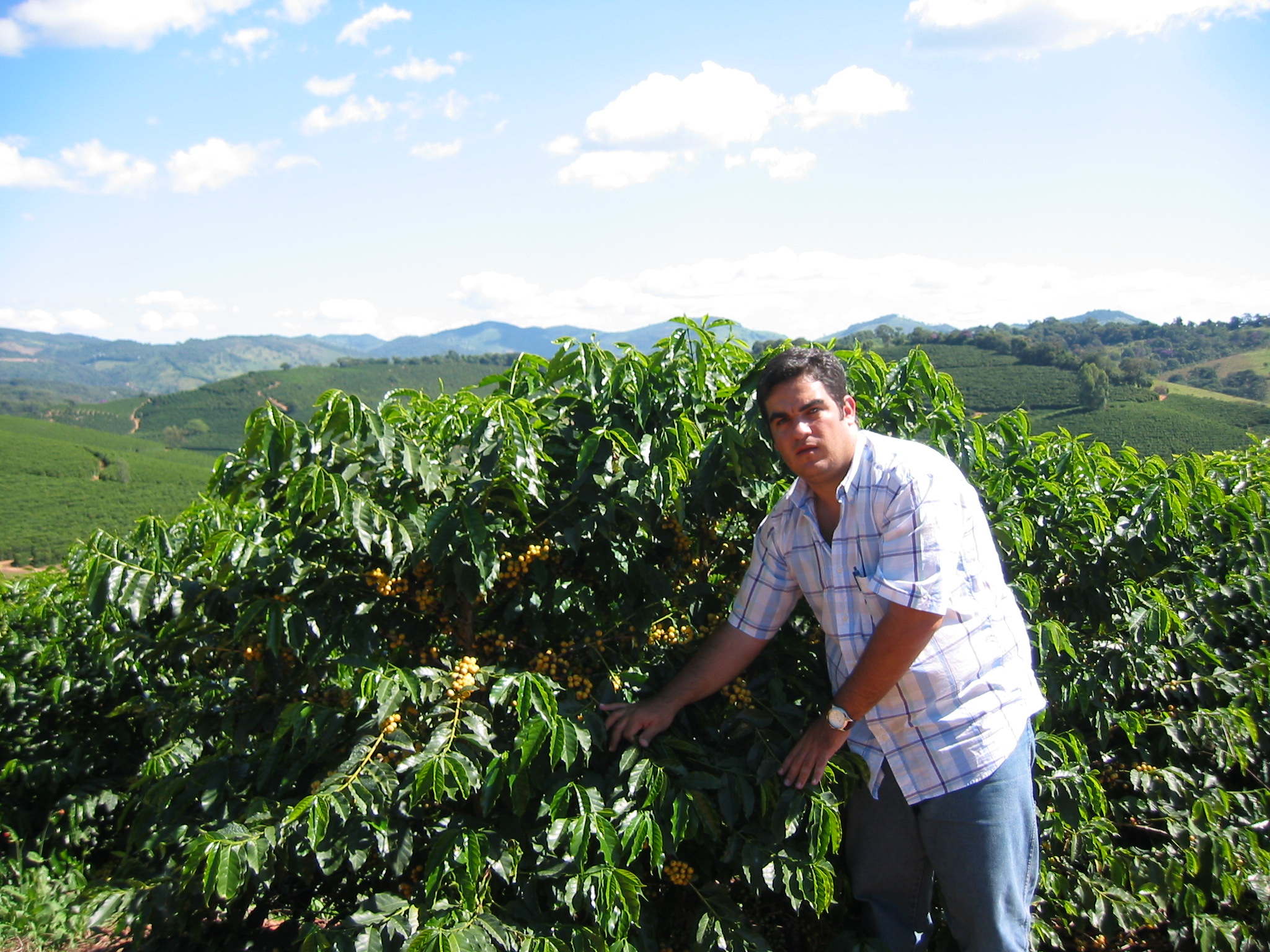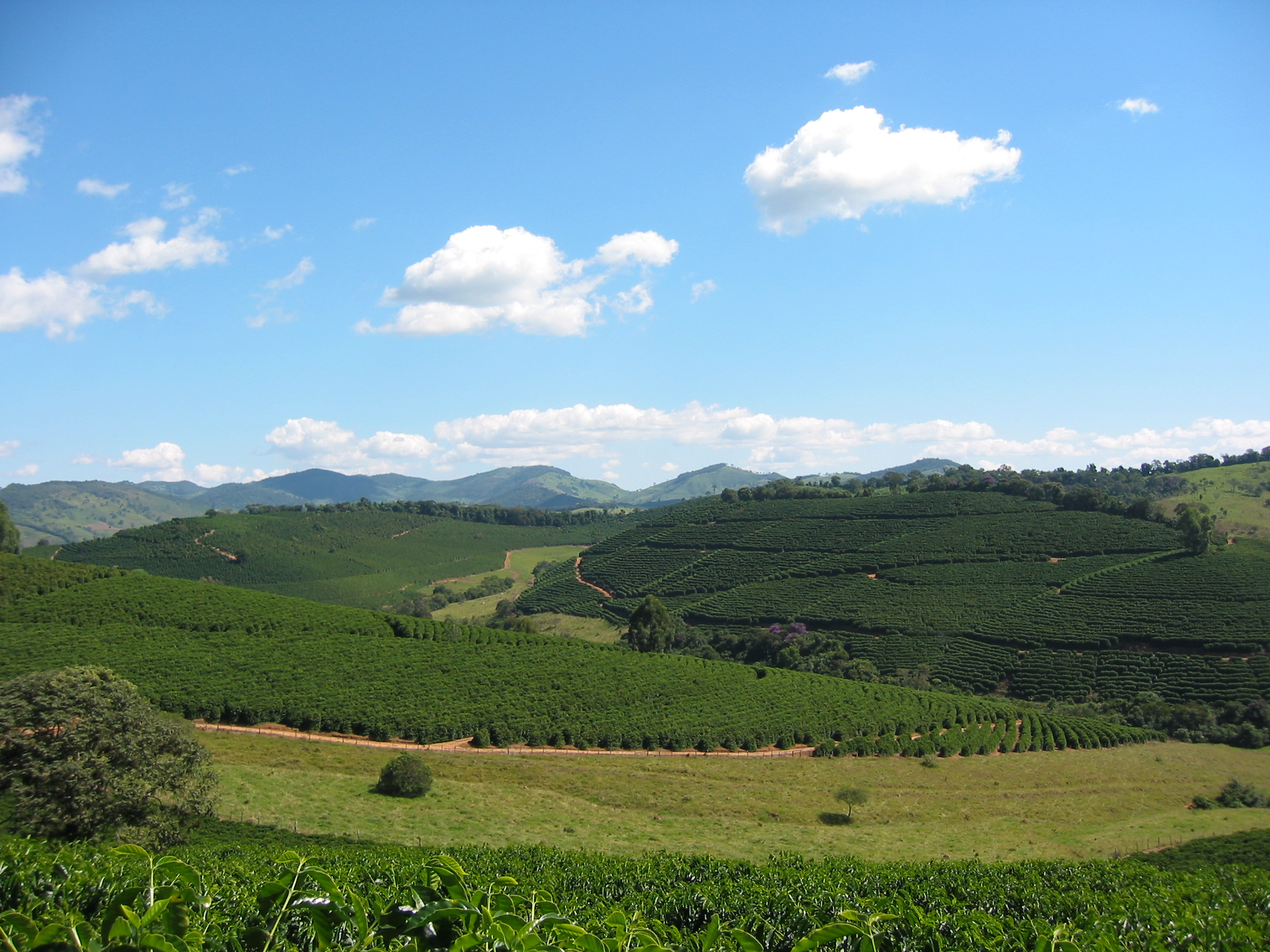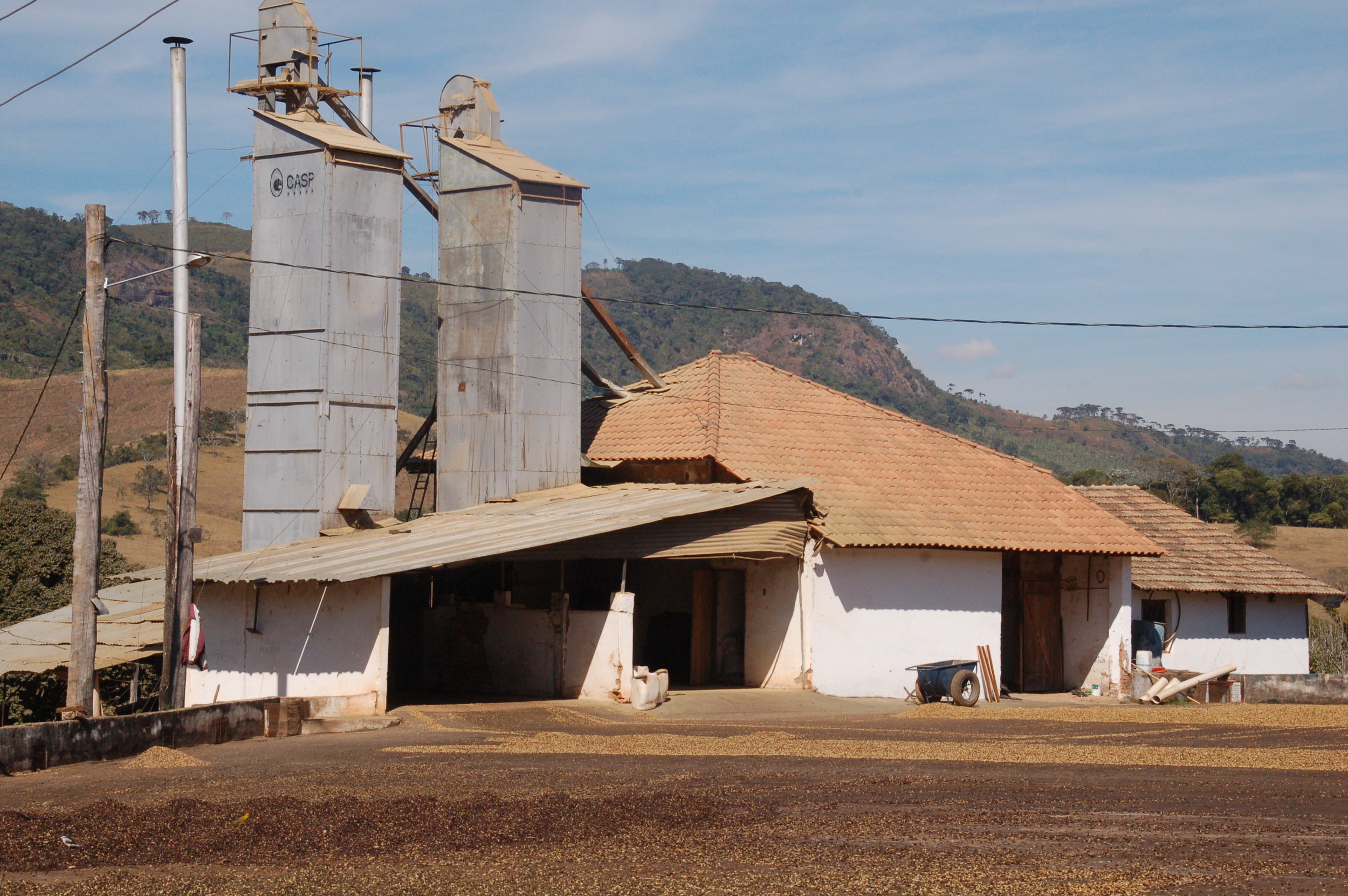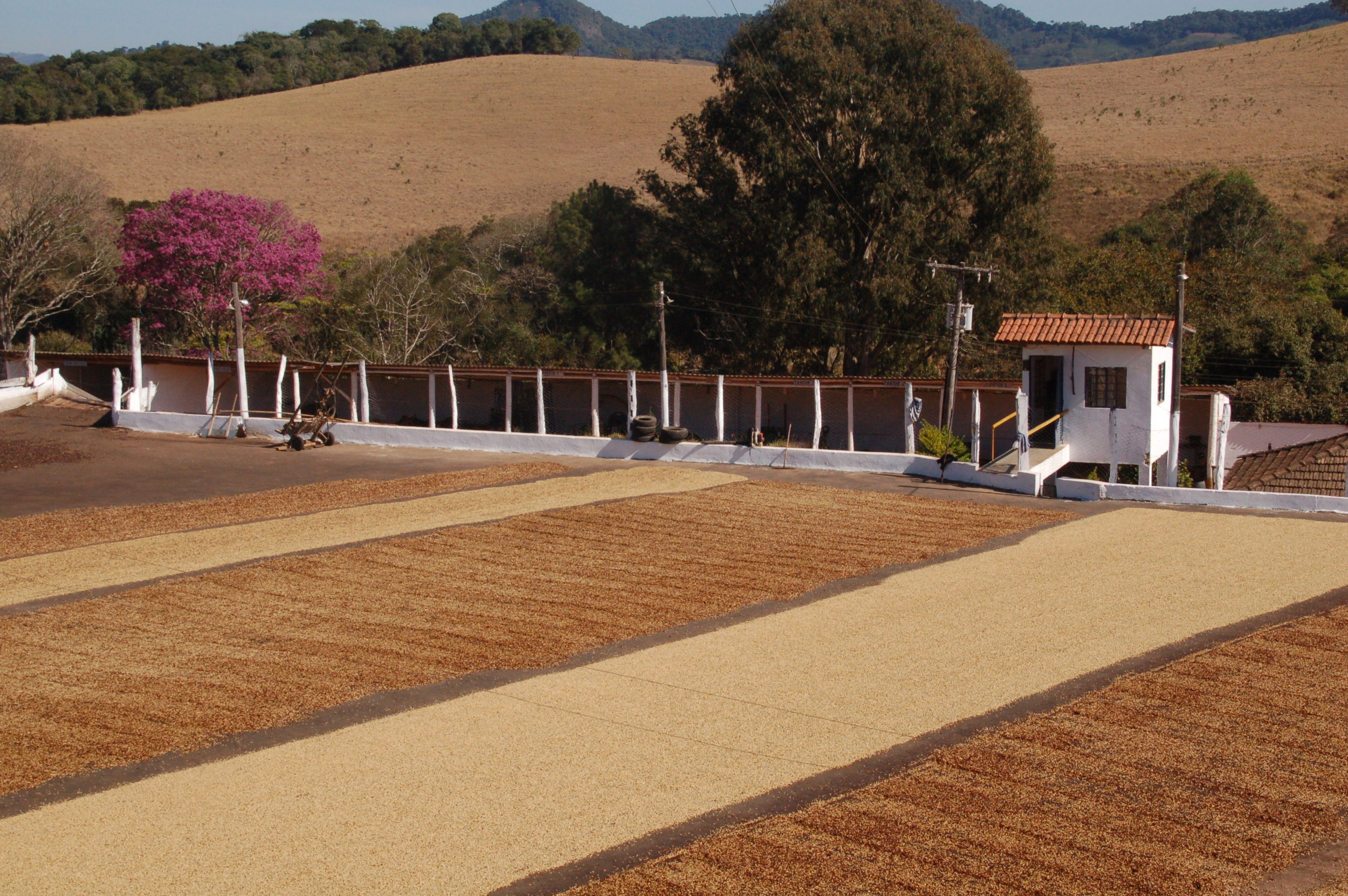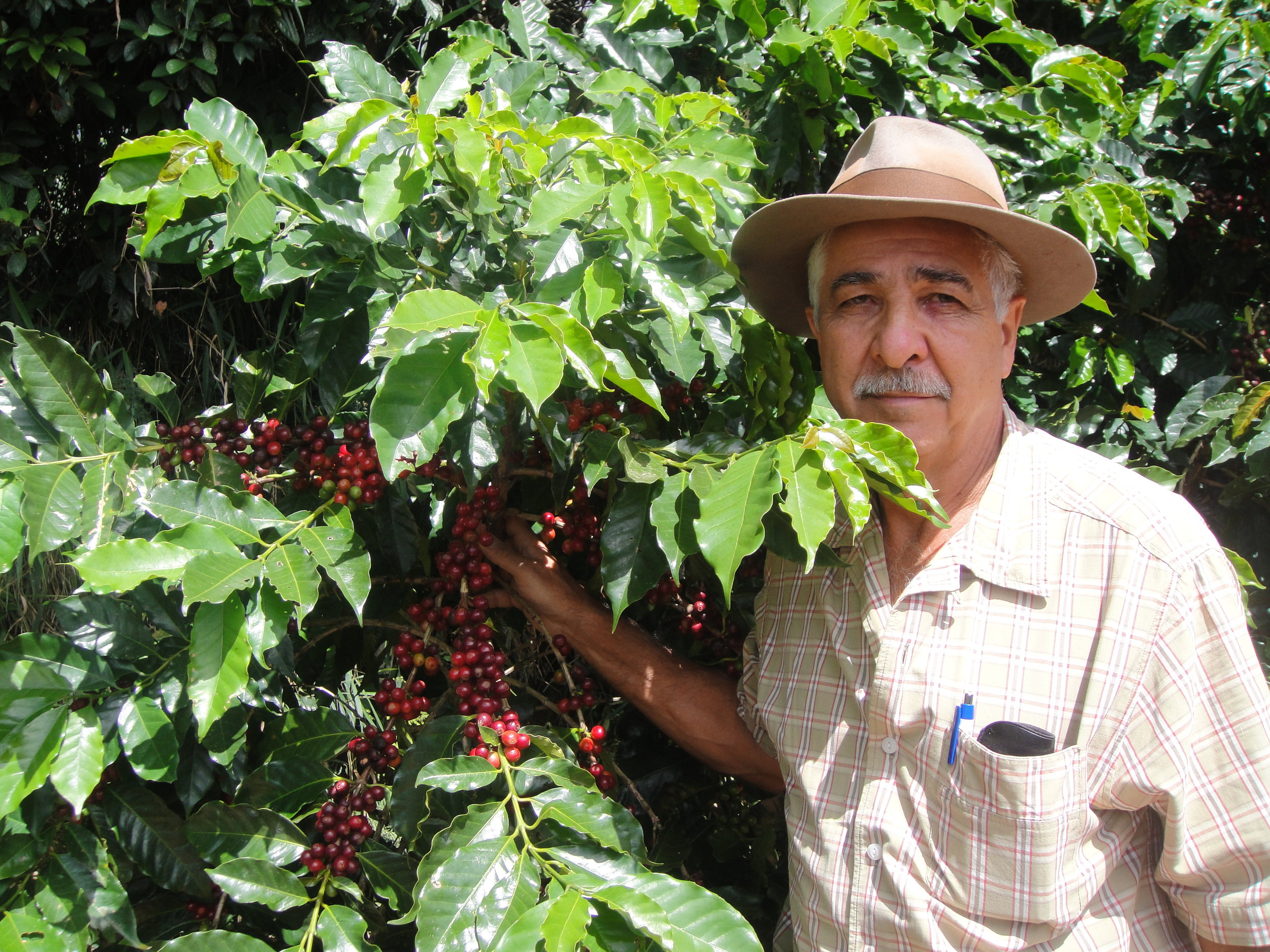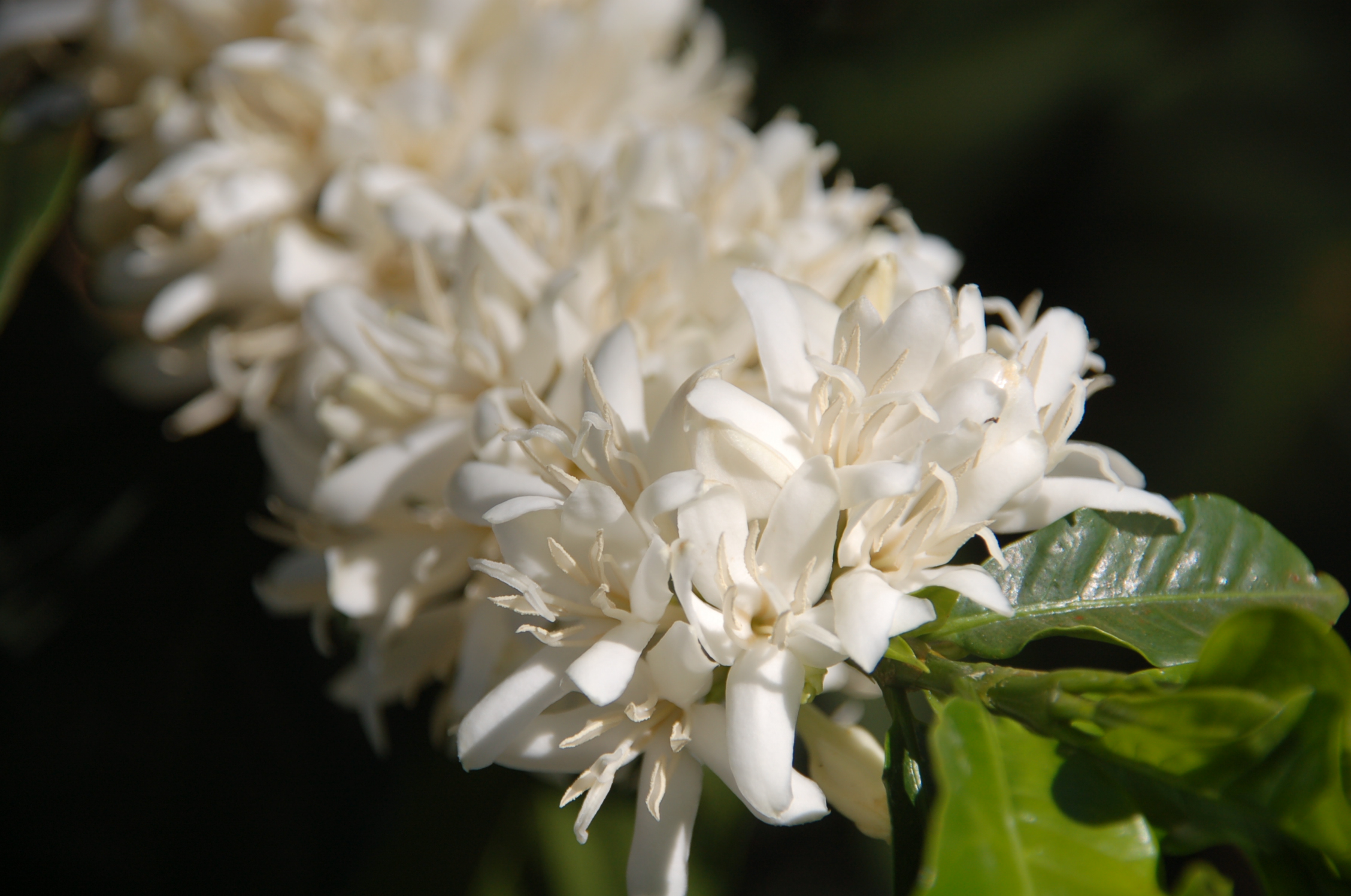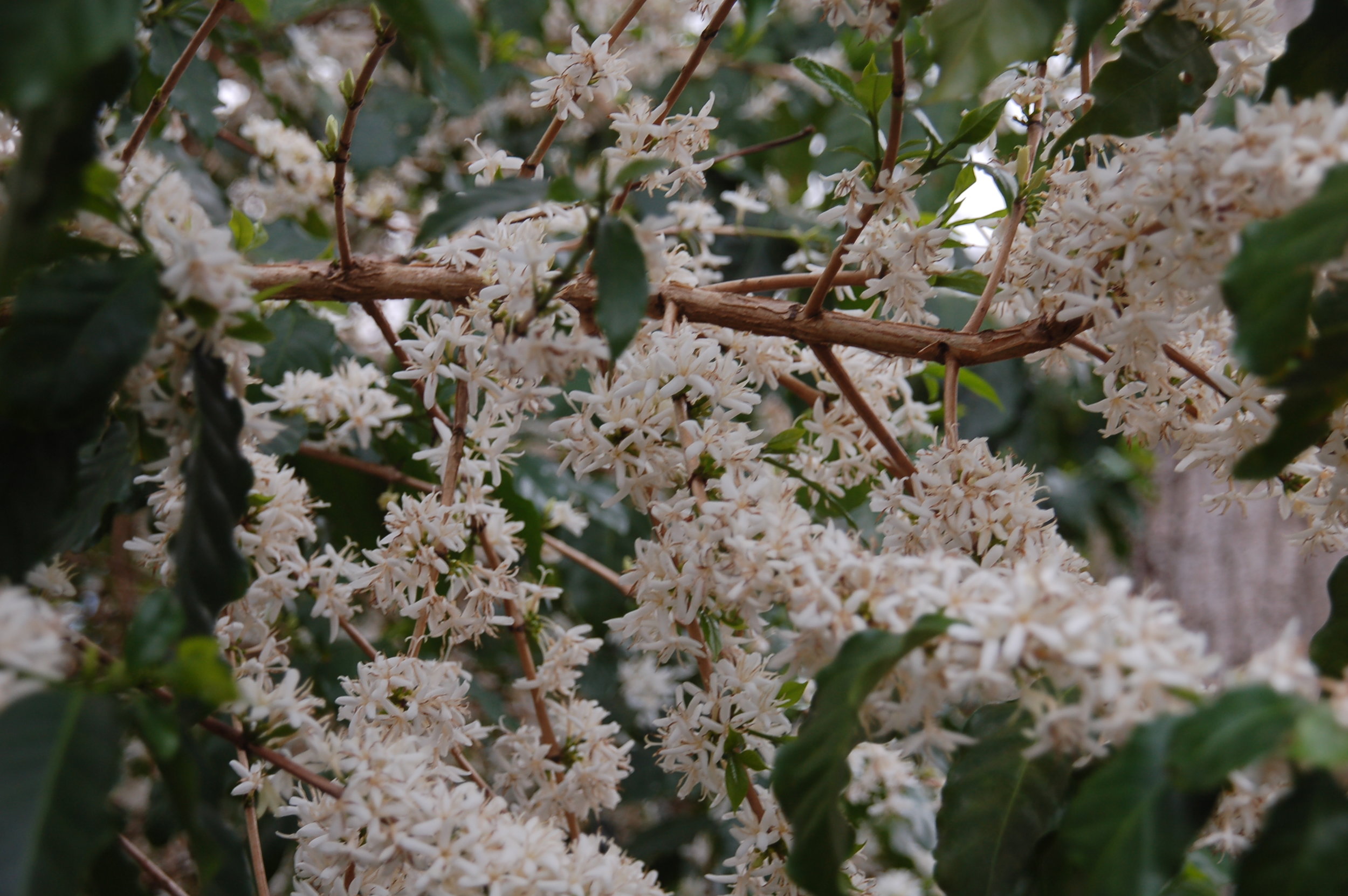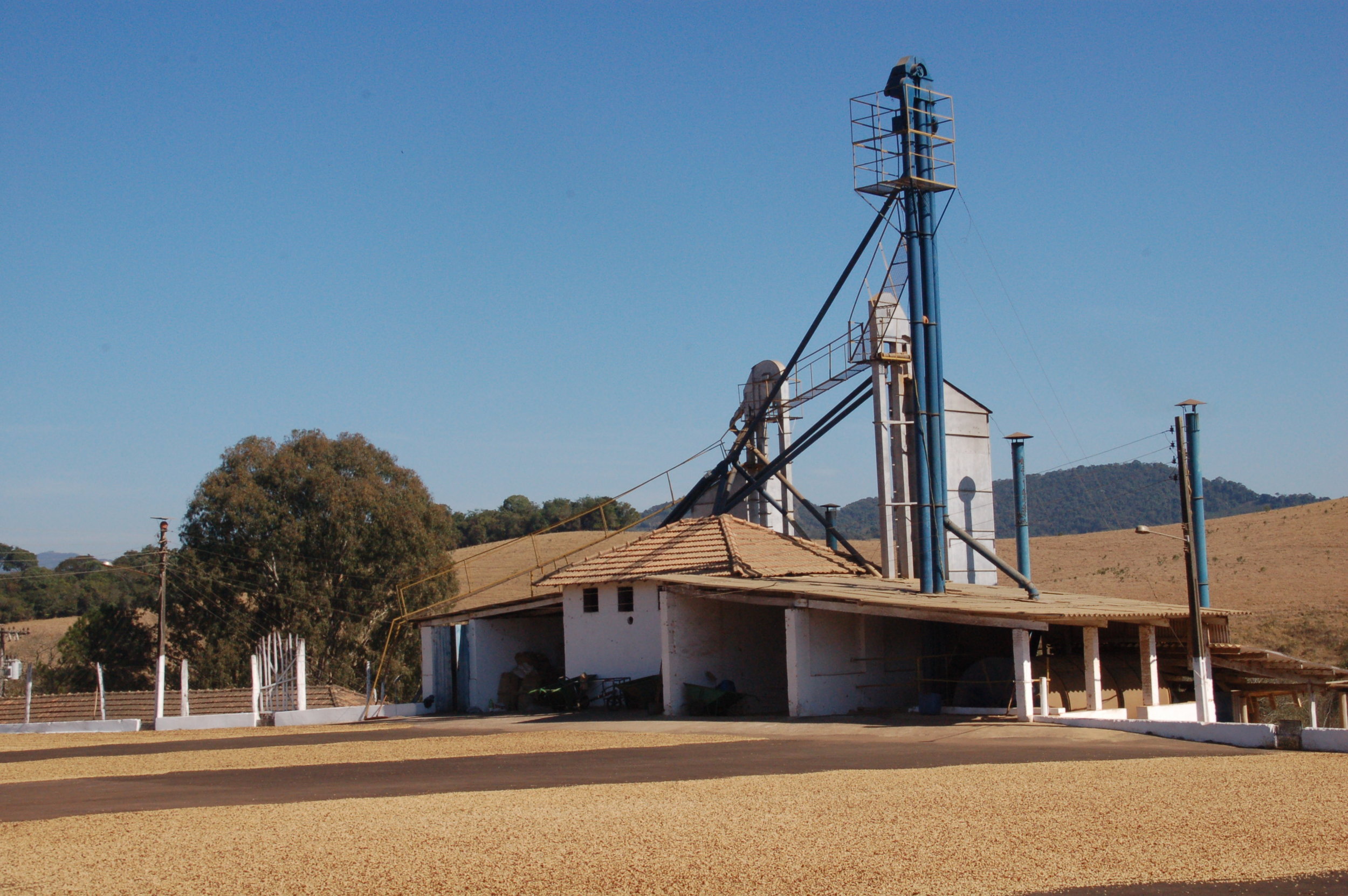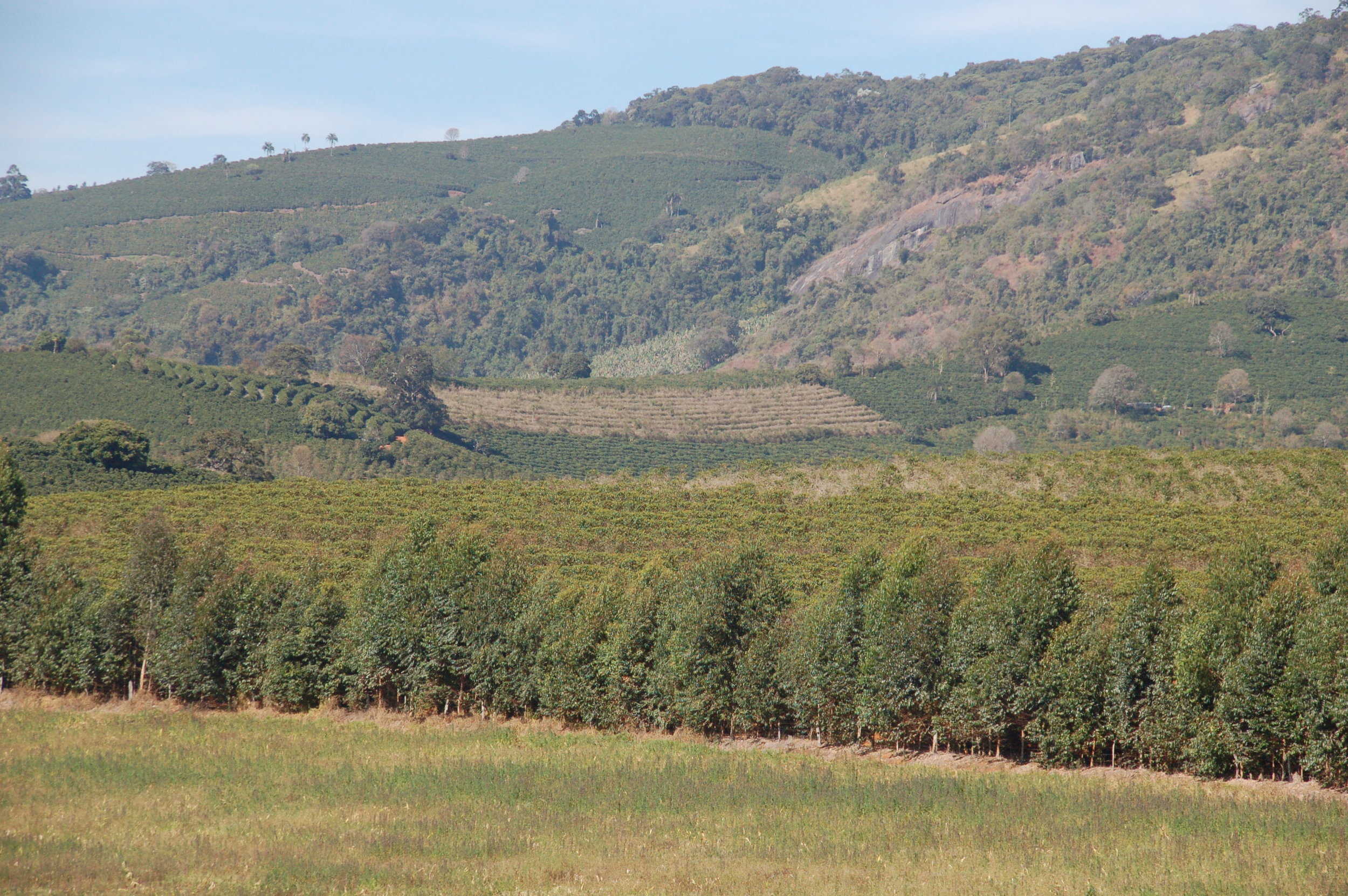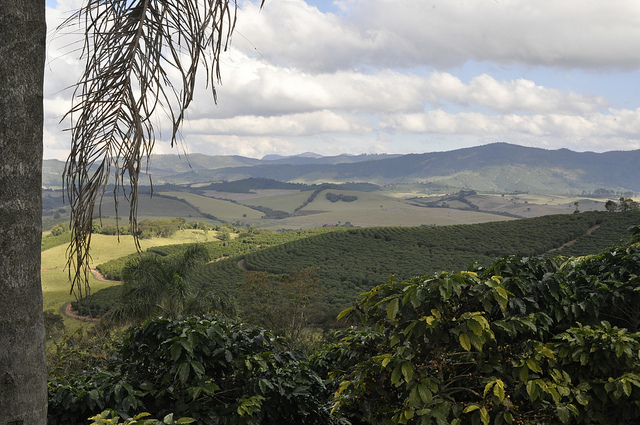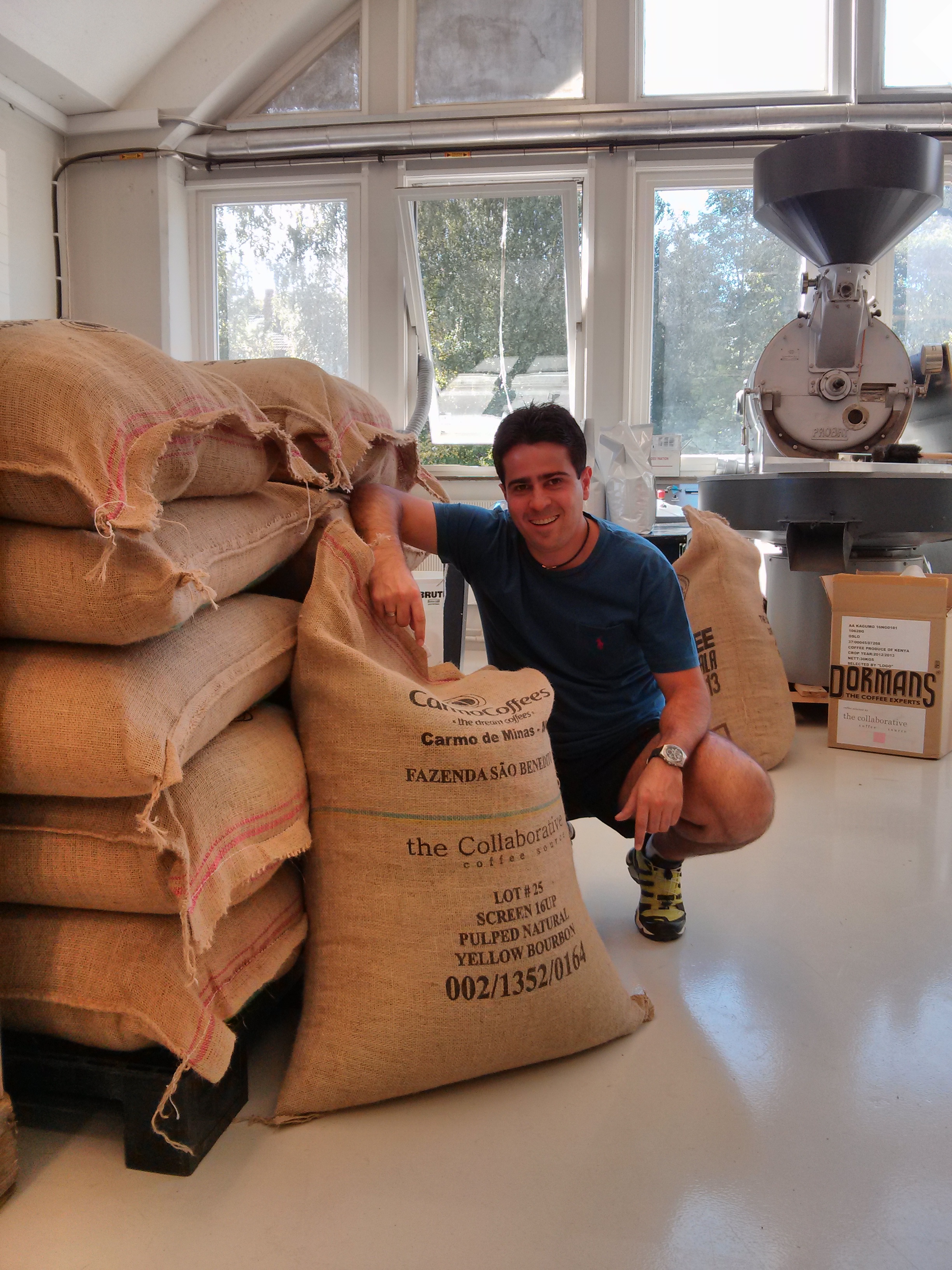 Name: Fazenda Sertão
Total estate area (acre): 1 976
Total area planted with coffee: 519
Varietals: Yellow Bourbon, Red Bourbon, Yellow Catuaí, Acaiá, Mundo Novo, Icatu and Catucaí
Average Total Production (bags): 6 200
Average Pulped Natural Production: 2 800
Average Natural Production: 3 400
Name: Fazenda Sertão
Total estate area (acre): 1 976
Total area planted with coffee: 519
Varietals: Yellow Bourbon, Red Bourbon, Yellow Catuaí, Acaiá, Mundo Novo, Icatu and Catucaí
Average Total Production (bags): 6 200
Average Pulped Natural Production: 2 800
Average Natural Production: 3 400
About
The Sertão estate is owned by the Sertão Group, a family firm with more than 100 years history in the production and commercialization of high-quality coffee. The Sertão Estate, located in Carmo de Minas, South Minas Gerais, was inherited by José Isidro Pereira and Nazareth Dias Pereira and is now managed by their sons and in-laws. The region is well known for its mineral water springs, perfect combination of latitude and altitude, mountainous terrain, well-defined seasons and fertile soil.
Favourable climatic and growing conditions found in South Minas have resulted in an expansion of the firm’s coffee program. The Sertão Group now possess large areas planted with coffee and are constantly developing infrastructure capable of producing a wide variety of high quality arabica coffee to both domestic and international markets.
In addition to coffee production the Sertão Group, in recent years, has successfully begun breeding and selling Girolando cattle, as well as cultivating and selling corn and soybeans. The firm employs highly qualified technical assistance in each of its areas of activity, in order to ensure the quality of the products.
The Sertão Group employs approximately 135 families that reside on-site throughout the year. These families make up the core of Sertão’s permanent team and are provided with free housing of good quality, running water, electricity, milk, coffee and fruit. In addition, on-site schools with fully qualified teachers for primary and secondary education, on-site medical and dental care, soccer fields and fishing ponds for leisure time, are provided.
In an effort to ensure and promote environmentally sustainable practice, programs have been implemented to preserve springs and water sources, wildlife, forests and other vegetation, and soil. All the water used in the washing tanks and pulpers is recycled, with residues transferred to settling ponds in order to avoid excessive use of water and contamination of the surrounding environment. The husks of pulped coffee, which are rich in nutrients, are used as fertilizer and organic matter in the coffee fields.
Background to Carmo de Minas
Over the past decade, Brazil as a nation has experienced fantastic economic growth in every field, with higher purchasing power and an ever-increasing standard of living. At least 20 million people have risen above the poverty-line and the middle-class has grown by 40 million in a relatively few number of years. The value of labor has also increased: Brazil now has full employment and rising wages. All of this naturally affects the cost of coffee production in general, but it especially affects labor-intensive coffee (read: new processing methods with even higher costs). In some cases it is difficult to find labor at all, especially for farm work. Incentives must be strengthened in order to keep people at work within coffee. And as the world’s largest producer of coffee, Brazilian coffee is the main component of blends all over the world. Thus, the price paid for Brazilian coffee is a reflection of the fact that coffee from here is considered a base product. In parallel with fluctuations in world markets and in the pricing of coffee in general, the specialty coffee segment has established its own price dynamics.
Although coffee is an old commodity in Brazil, over the past 10-12 years, the country has been showcasing its very best coffee and it has only been in the last 7-8 years that coffee in the Carmo de Minas municipality has been particularly noteworthy.
Carmo is one village among twenty in the Mantiqueira region, south of the Minas Gerais county, in Sul de Minas. In the same way that Burgundy is an important name in the French world of wine, Carmo de Minas has become a destination in the Brazilian coffee world. Some of its distinction can be attributed to topographic and climatic conditions, but as always, there are people engaged – from picking coffee cherries to processing; both crucial to the quality of the product. People make the difference.
Although many of the farms in this area have won awards and garnered attention in recent years, there have not really been radical changes in farming and processing methods. Not even in terms of picking. We believe that the area has achieved its status with a little bit of luck, good growing conditions, good plant material – mostly Bourbon – but otherwise quite ordinary craft. However, good coffee has come out of all this and as a result, Carmo has experienced a “clean sweep” in Cup of Excellence competitions. But the quality can be even better, as well as the amount of the best coffee increased.
Jacques Pereira Carneiro represents the new generation in Carmo. Together with cousin Luis Paulo (who currently is president of Brazil Specialty Coffee Association (BSCA)), he runs the coffee export firm Carmo Coffees. These two men represent a 5th generation of coffee farmers and they collectively oversee 12 farms and 6 processing stations – altogether owned by their Pereira family. This family is also members of the cooperative Coca Rive, which offers its members courses on taste evaluation, distribution of fertilizer and storage facilities. Coca Rive has 400 members and is the smallest of the smallest cooperatives in the Carmo region, with its 8000 coffee farms. Previously Coca Rive worked almost exclusively with commercial coffee in this area and a few years ago it was a challenge to fill even one container (300 bags) of specialty coffee. Last year Carmo Coffees sold 150 containers of coffee over 80-points. We at CCS expect true specialty coffee from 86-points, but know that this proportion is also increasing in Carmo.
Carmo’s reputation is so well established that there is an ever-increasing demand for more coffee of their quality. Carmo Coffees does not just work with its own family’s production; it works hard to provide coffee from farms outside the family’s, including coffee from other districts. Pedralva, for example, is just a few miles from Carmo de Minas and many of the farms here are good, with altitudes up to 1400 meters above sea level. The work now is for a few farmers to push the idea of working a little differently to achieve better quality. With higher prices in the specialty coffee segment comes the motivation to do better than before. According to Jacques, this change can be facilitated, but the first challenge is to pick a technique. On top of this are the added associated costs. Historically, the picking technique has been picking the coffee bush clean (stripping) during one picking and one harvesting season. Most people do this and even use partially mechanized equipment to do the job, which is more time-effective. But to get the sweetest coffee, you have to pick the sweetest, ripest cherries.
Minimum wage has increased to about $500 per month and although this is a low salary on any scale, these wages mean that the work of selective hand-picking coffee cherries represents up to 2/3 of the total cost of coffee production, even when coffee is sold at a 100% premium over commodity coffee.
pdf version



